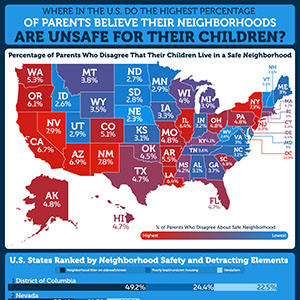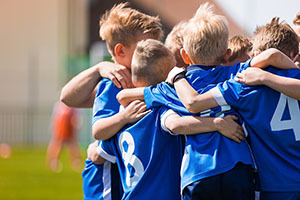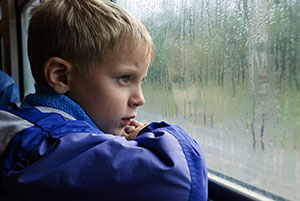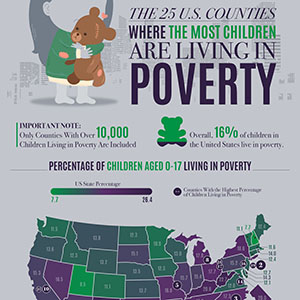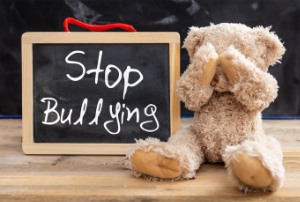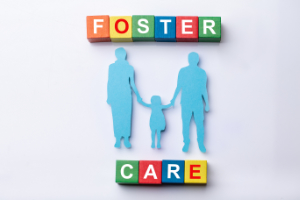Category - child-abuse
Posted by Dr. Julia Tortorice
Creating a safe, healthy, and happy home for children is a goal shared by millions of Americans. Unfortunately, extenuating circumstances often contribute to less-than-ideal living situations. The team at PARequirements.com has analyzed data from the National Survey of Children’s Health to determine which states are the most unsafe for children based on their neighborhood conditions.
It is important to highlight these unsafe neighborhoods in the United States because a child’s health, happiness, and success often begin at home. While many children can thrive in various environments, living in a safe neighborhood can significantly boost their mental, physical, and social well-being. By showcasing which states have the most rundown housing, vandalism, and litter, we can pinpoint patterns and spur targeted efforts. Here are the results:
Click here to download the printable PDF version of the chart.
Why Is Washington, D.C. So Dangerous?
While Was...
Posted by Mary Thompson
As the winter months roll in, classrooms, clinics, and counseling offices often take on a unique energy. The shorter days, colder weather, and anticipation of holidays can stir up a mix of emotions in children – excitement, fatigue, restlessness, and sometimes anxiety. Routines may shift, energy levels fluctuate, and even the most even-tempered students can feel off balance.
In these moments, the presence of a caring adult can make all the difference. For many children, school and other environments offer consistency they may not have elsewhere. Whether you are a teacher greeting your students each morning or a nurse helping a nervous child through a vaccination, your daily interactions form the backbone of emotional safety and connection.
It‘s easy to underestimate the impact of small gestures — a smile, a word of encouragement, or a moment of genuine attention. But research continues to show that children thrive when adults consistently show care in even the s...
Posted by Mary Thompson
Youth sports play a powerful role in shaping children’s lives. From building confidence and discipline to encouraging teamwork and resilience, sports can be one of the most positive influences in a young person’s development. Yet, these environments can also become unsafe when proper safeguards are not in place.
Coaches and Volunteers often hold significant authority over athletes. That power comes with responsibility–not just to teach the rules of the game, but to protect the well-being of every child in their care. In Pennsylvania, anyone working with children in a supervisory role, including coaches and sports volunteers, is considered a mandated reporter under state law. This legal and ethical duty means recognizing the warning signs of abuse and taking action when concerns arise.
The purpose of this article is to help coaches and volunteers identify the different types of abuse that can occur in sports, understand the risk factors, r...
Posted by Mary Thompson
Summer is often celebrated as the season of sunshine, freedom, and family fun. However, beneath the surface, these warm months can also present unique challenges and heightened risks, especially for children living in stressful or unstable environments. For mandated reporters, individuals legally required to report suspected child abuse or neglect, staying vigilant during this time is crucial.
Throughout the year, schools and structured environments play a vital role in safeguarding children. Teachers, counselors, and other professionals serve as protective eyes and ears. But during the summer, when routines are disrupted and supervision is often inconsistent, the risk to children can quietly increase.
This blog examines why summer can be a vulnerable time for children and how mandated reporters can remain vigilant and proactive, even when their traditional roles may be on hold or reduced.
Understanding Holiday Stress in the Summer
While winter holidays like Christmas or Th...
Posted by Dr. Julia Tortorice
Click the image to view the full-size visualization
Even today, poverty affects millions of lives across the United States, including children. A staggering 16% of all children in the country live below the poverty line, impacting their education, health, and overall well-being. While poverty statistics might seem abstract, its effects go beyond individual families, affecting entire communities, straining social services, and limiting future opportunities for economic mobility.
The sobering prevalence of child poverty urgently demands solutions that address both the immediate needs of children in poverty and the long-term systemic barriers that perpetuate financial hardship. With data from the U.S. Census Bureau, this report from PARequirements aims to highlight the extent of child poverty and its devastating impact.
Click here to download the printable PDF version of the chart.
Causes of Child Poverty
Child poverty is driven by multiple factors, many of which ...
Posted by Dr. Julia Tortorice
As professionals who work with children, whether in education, healthcare, or social services, it is essential to be able to recognize signs of trauma. Trauma can have profound and long-lasting effects on a child's well-being, development, and future opportunities. This guide will help understand more in-depth the significance of identifying trauma in children and provide insights into the appropriate steps to take if the situation ever arises.
The importance of recognizing signs of trauma in children cannot be overstated for professionals who work closely with them. Trauma can also cause severe effects on a child's mental health and behavior. This post aims to provide professionals with insights into recognizing signs and understanding the appropriate steps to take. By doing so, professionals can intervene early and effectively, offering vital support to children in need.
Another thing this guide will cover is various aspects of trauma in children, including definition, ...
Posted by Julia Tortorice
In 2021, there were 38,013 reported cases of child abuse in Pennsylvania - that accounts for 14 reported cases per 1,000 children. That same year, the national average was 8.1 cases per 1,000 children.
While these numbers are distressingly high, they only account for reported cases. There are undoubtedly countless more instances taking place. These children often have no advocates to help protect them and prevent abuse.
How can we in the healthcare community help to support and protect these at-risk children? It comes down to understanding how to identify signs of abuse and how to effectively communicate about abuse so that swift action can be taken.
Identification
For nurses, understanding the warning signs of abuse can be critical.
Signs and symptoms of abuse and neglect can be broken down into three key areas: behavioral cues, symptom cues, and physical cues.
1 - Behavioral Cues
Behavioral cues refer to observed actions in children. These could be in response to...
Posted by Emily Pazel
In this day and age, there’s no escaping the constant ridicule of bullying. For school-aged children, the bullying doesn’t just stop once they come home from school – it’s virtual and all around them 24 hours a day, seven days a week. It doesn’t stop. And, unfortunately, it’s harder to prevent and control. So, is there anything you can do? That answer to that question is yes! While bullying might look a little differently than it did when you were a kid, it’s still the same concept.
Since the month of October is National Bullying Prevention Month, it could be a great opportunity for you, as a parent or a person that works closely with children, to take a step back to learn the signs and make steps can be taken towards helping someone that may be experiencing bullying.
Although bullying may seem like an ordinary thing that everyone experiences at some point during their life, it should be prevented or acknowledged as it could l...
Posted by Emily Pazel
As growing protests throughout major cities and talks about racism and police brutality have emerged recently, you might have noticed that your children are curious about the news and want to learn more about it. While many children are still sheltering at home due to Coronavirus restrictions, parents might have eased up on screen time a little, resulting in children seeing videos or news of protestors taking a stand after George Floyd, an unarmed black man in Minneapolis, was arrested and later died under police custody.
With both negative and positive messages flooding news channels and social media outlets 24 hours a day, it’s hard to not be concerned whether or not your child understands what’s going on or fully comprehends the situation. Taking the time to talk with them and listen to them could help them understand better, while also creating a strong bond and connection between yourself and the child to engage in further communication down the road.&nb...
Posted by Emily Pazel
Technology today is ever-growing and reaching people both young and old, it is important to know the real threat behind dangerous people creeping among the internet looking for their next victims. Even though we now have easy and direct communication with long-distance family members and friends, the internet also allows complete strangers to lure unsuspecting children into their grasp.
On the internet, people have the advantage of being much more anonymous than in the real world, and because of this, online predators can create fake accounts and profiles to trick people into thinking they are a friend or someone they can trust. Especially for young children, bad situations can arise fast and it is good for them to have a trusting adult that they can go to for help.
As a parent, it is good to know this information to help your kids remain as safe as possible. And if you are a professional that works or sees children on a daily basis, it is also critical that you are able to pinpo...
Posted by Emily Pazel
With an international pandemic looming, you might have found yourself sticking around your house more than usual lately. Maybe your kids are doing virtual school and won’t be going back for the rest of the school year, and you need some ideas to keep busy. Or, maybe you don’t have children but still need something constructive to do at home to ensure your sanity. Either way, you are in luck!
The month of June is National Safety Month. Each week, you can take the opportunity to re-evaluate your safety plans and improve your safety standards at home, in the community or even at work. Whether it’s increasing your first aid knowledge and emergency awareness through drills or taking a quick online CPR class, you can take steps to be better prepared for when an emergency strikes.
Family Safety Tips
No matter how big or small your family is, safety should be a major priority with the ones that you love in order to keep them safe and sound. There are many...
Posted by Emily Pazel
All children deserve a loving home and a comfortable bed to sleep in, and through the foster care system, caregivers are able to help children find the happy medium they deserve until they are adopted or placed back with their rightful families. In 2018, there were over 400,000 children that were living in foster care, with nearly one third of them living with relatives of some kind.
During the month of May, we celebrate National Foster Care Month to recognize those that play a critical role in enhancing the lives of children in foster care, and by increasing the spotlight on the needs of children who may be living in tough situations around the country. So, maybe you or someone that you know is looking into foster care and how it works? We are here to explain the process and make it a little easier to understand.
What is foster care? And how does it work?
Foster care, by definition, is a temporary living situation for children whose parents cannot take care of...

